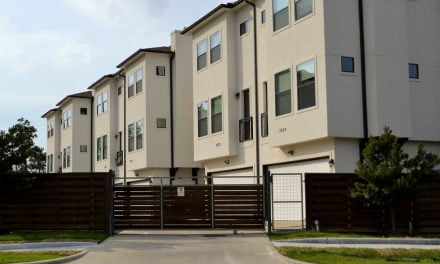California earns a silver medal in worst homeownership rate in the nation (second only to New York). Now, recent renter reports are showing the Golden State is going for gold.
Between 2011 and 2020, 101 national zip codes switched from homeowner to renter majority. Of those 101, California renters outnumbered homeowners in:
- 92123 (San Diego) by 54.9%;
- 95833 (Sacramento) by 53.3%;
- 95842 (Sacramento) by 54.3%;
- 90803 (Long Beach) by 52.9%; and
- 95820 (Sacramento) by 51.2%, according to RentCafe.
This tipping point spells trouble ahead for cost-burdened renters — renters who spend more than a third of their monthly income on rent. While inflation eats up workers’ wage gains since the pandemic, California’s low rental vacancy rate shows more residents are competing for fewer rentals units — sending up rent prices. This combination threatens to cut off many low- and middle-income Californians from accessing to the most critical equity-building vehicle available to them: homeownership.
The national trend toward renter-majorities is reflected across California’s major metros. In 2019, Sacramento was one of 12 cities nationally that flipped to homeowner majority in the last decade, according to RentCafe. With two additional zip codes in Sacramento flipping from homeowner to renter majority, Sacramento’s homeowner-friendly badge of honor is slipping.
The trend doesn’t end in Sacramento as renters are flooding major metros across the state and changing the tide in other areas. The California zip codes with the fastest-growing share of renters from 2011 to 2022 include:
- 95134 (San Jose), whose renter share grew from 67% to nearly 82%;
- 90013 (Los Angeles), whose renter share grew from 87% to nearly 90%;
- 90014 (Los Angeles), whose renter share grew from 94% to nearly 98%; and
- 94103 (San Francisco), whose renter share grew from 81% to nearly 85%, according to RentCafe.
Los Angeles is home to a glut of renters as one of the most populous (and expensive) metros in the U.S. Within the last decade, apartment construction in Los Angeles has boomed as the city attempts to make up for years of chronic underproduction.
Taking the cake for the highest renter share in California is San Francisco’s 94130 zip code, also known as Treasure Island. This area is home to over 2,000 residents who are all renters, according to RentCafe.
After the job losses and job unavailability during the pandemic, many San Franciscans along with the rest of California migrated to less expensive cities or became renters.
Related article:
California’s suburbs flip as Millennials and Gen Zs become majority renters
Keeping renters renting
The shift toward renters in these zip codes forecasts a perfect economic and housing policy storm drenching California’s lower and middle classes.
Despite recent legislative changes at the state level, zoning remains fiercely contentious across California. Organized not-in-my-backyard (NIMBY) advocates enjoy a chokehold over local city councils when it comes to new housing, squeezing out sorely-needed density. Rigid zoning rules and combative NIMBYs leave little room for cities to meet their housing element obligations.
After zoning, comes the housing. Heavily populated metro cities such as Los Angeles are still recovering from a long-term lack of construction starts. As a result, builders are focusing on new multi-family residences (MFRs) instead of single-family residences (SFRs) to capitalize on California’s growing renter population.
Related article:
Builder confidence collapses as recession settles over the housing market
Further keeping homeowners at bay are mortgage interest rates. The Federal Reserve (The Fed) has hammered interest rates with Federal Funds Rate through 2022 and show no sign of slowing.
This translates to a 7.08% 30-year fixed rate mortgage (FRM) and 6.38% 15-year FRM as of the week ending November 11, 2022. Since rates are now on a long-term upward climb, renters eyeing homeownership will find themselves waiting through 2025 to find the bottom of this market cycle’s home prices. Even investors are eyeing this trend.
It comes as no surprise that renters wanting to become buyers will need California lawmakers’ help to reach the American Dream. To meet demand, California’s legislature needs to continue:
- loosening restrictive zoning;
- incentivizing transit-oriented developments; and
- facilitating higher-density construction, including MFRs and accessory dwelling units (ADUs).
In the meantime, real estate agents looking ride the renter wave and survive the still undeclared recession will need to consider branching out to other ways of earning income in the recessionary market ahead, like becoming a property manager.
Adding property manager to your portfolio takes advantage of your existing real estate skills and knowledge. The position also enjoys some insulation from recessions as housing is the last cut consumers consider from their budget during lean times.
Related article:
Additionally, consider safe investments such as government bonds or seeking advice from a financial advisor to make the best strategic steps going forward. Creating a financial cushion is critical to thriving through the recessionary economy.
Stay on top of renter behavior (and your future clientele) by subscribing to Quilix, the firsttuesday newsletter — sign up for weekly updates on California housing market indicators!













